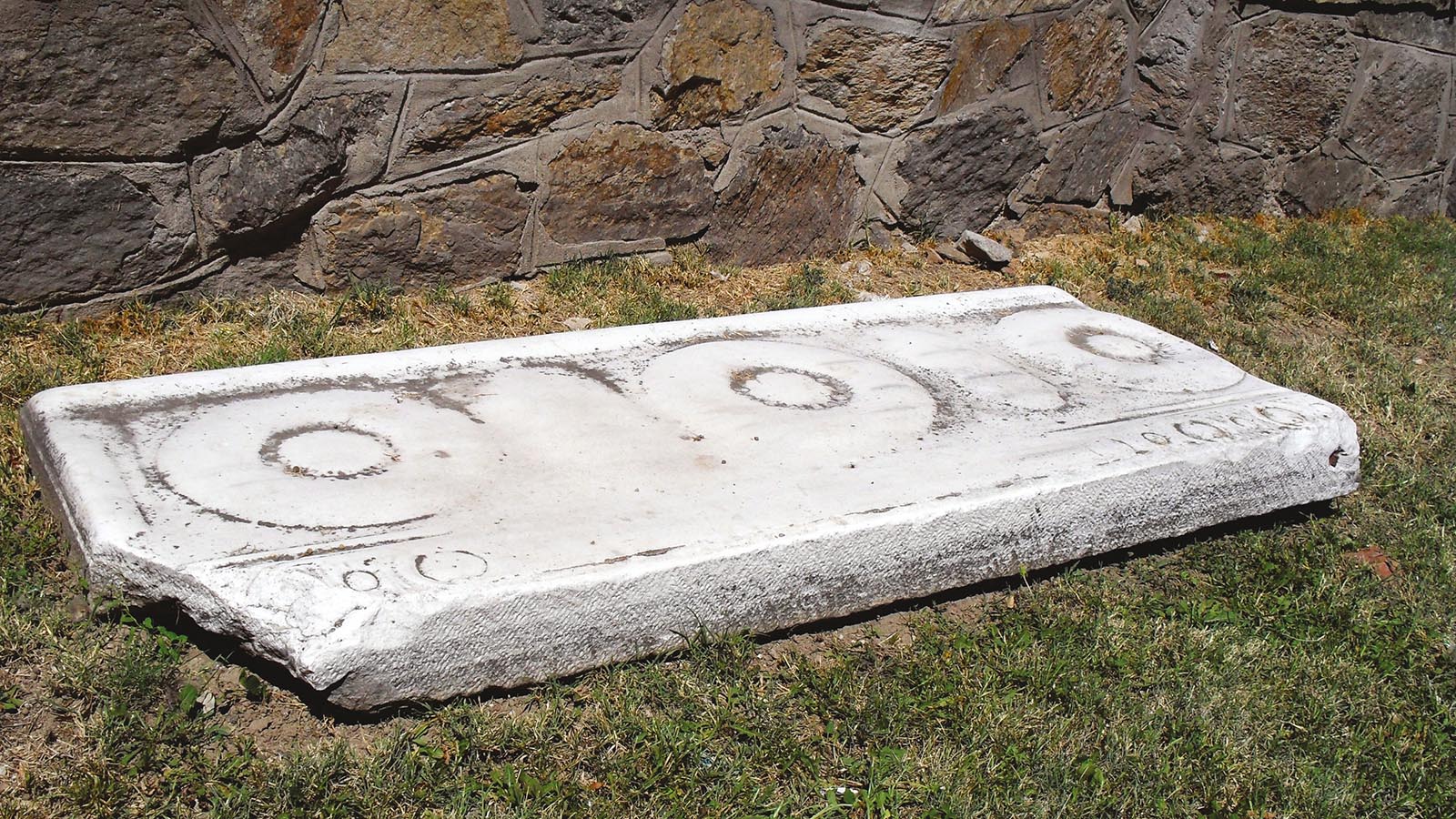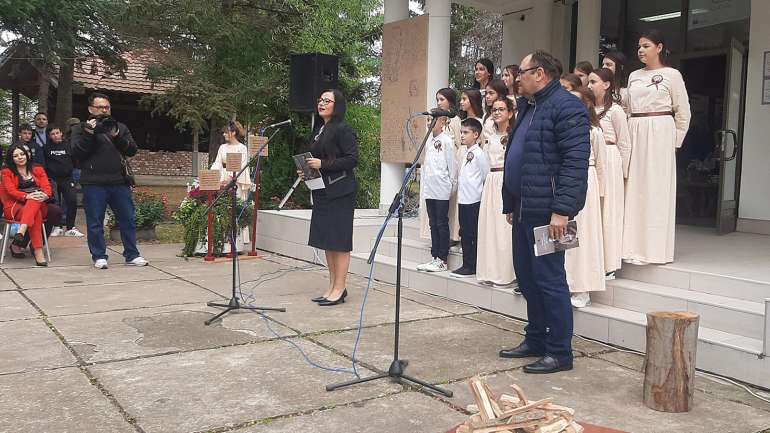By: Branislav Cvetković, museum advisor
Often in front of the buildings of large museum institutions, especially in those settlements that lie on the foundations of ancient cities, under the open sky there is a large number of massive stone remains of ancient or medieval sculpture and architecture. Due to very unusual circumstances, on a narrow green area in front of the main side facade of our Museum and opposite the building of the City Court, there is one such monumental stone slab. It attracts the attention of many passers-by and children can often be heard asking parents or teachers: “What is it?”, or “What kind of stone is that?”
It is a marble block of considerable weight and dimensions – 185 cm long, 75 cm wide and 13 cm thick. It was transferred to its current place by forklift from the yard of Jagodina’s Old Church in the spring of 2002. Namely, at that time, the addition of the narthex to the temple of the Holy Archangels Michael and Gabriel was prepared. Since this stone slab was in front of the church threshold, the then parish priest, the late priest Radovan Rakić, turned to museum experts for advice so that it would not be damaged during the works. Given the new circumstances in which the ancient monument would not have a suitable place, a decision was made to move it to the grassy area next to the museum building, where a museum lapidary should be formed by moving a number of large stone and metal objects from the museum depot.
The origin of the stone slab reveals its interesting destiny and the threatened past of many cultural and historical monuments in the city. Thanks to the data recorded by one of the first Jagodina researchers, historian Emilo Cvetić (1876–1930), we know that the marble slab was originally located inside the church, in front of the templon beam, where it was brought from the old Jagodina mosque at the time the temple was built in 1818. In his booklet on the monuments of old Jagodina from 1908, Cvetić also says that the slab was moved from the temple due to its smoothness and placed on the church threshold. A reliable indicator of the adjustment of the slab is that it is carved on one side and broken on the other. Its considerable politeness testifies to the fact that it was trampled on for a long time – it was used as a classic spoliar, so the legend of the slab as part of the mosque and its placing on the threshold of the church to be trampled on corresponds to the most common role of spolias as a means of triumph of winners over the defeated.
Subsequent research of white marble slabs which is decorated on the front with shallow relief decoration with alternately carved rosettes, cartouches and friezes point to the conclusion that it is the front of sebil, the form of a Turkish fountain that existed in front of the Dervis-beg Jahjapašić mosque from 1550. Until its demolition in 1928, it was located near the old “Juhor” factory, between Gina Pajevića Street and the railway. Western travel writers from the late 16th C. Wratislav von Mitrovitz and Andreas Wolf von Steinach, also testify to its existence and direct stylistic analogies are provided by identical plaques from the city park “Doktorska gradina” and the church of St Petka Samardžija in the Bulgarian capital Sofia, as well as plates from the Turkish fountain in the town of Halkis on the Greek island of Euboea.





